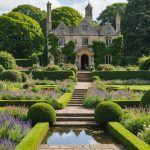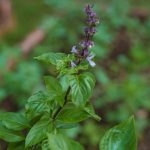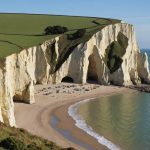A quintessential part of the English cultural experience is the vibrant and lively folk dance genre, known as Morris dancing. Rooted deeply in the local traditions and customs, Morris dances have been an integral part of English culture since the 15th century. This dance form, often a highlight of local festivals, is a spectacle of color, music, and exuberant energy. It offers people a unique glimpse into the rich tapestry of English country life. If you’re looking to immerse yourselves in these vibrant traditions, we’ve curated a list of rural villages that serve as the cultural epicenters for Morris dancing.
Thaxted, Essex
Nestled in the idyllic countryside of Essex, Thaxted is steeped in rich Morris dancing history. The Thaxted Morris Men, as they are known, have been the torchbearers of this tradition since the early 20th century. Every year, the Thaxted Morris Festival draws dancers and spectators from all over the country, transforming this quaint village into a pulsating hub of music, dance, and festivity. The sight of dancers in their traditional attire, performing intricate steps to the tune of folk music, against the backdrop of Thaxted’s picturesque landscape, is truly a sight to behold.
Also to discover : Where can you find an in-depth tour of the Harry Potter filming locations across the UK?
Bampton, Oxfordshire
Bampton, located in the western part of Oxfordshire, is another must-visit destination for Morris dancing enthusiasts. The Bampton Traditional Morris Men are well-known for their annual Whitsun performances, a tradition that dates back over a hundred years. The meticulously choreographed dances, accompanied by lively music created by melodeons and accordions, captivate audiences. The Whitsun performances, held on the late May Bank Holiday, also include a traditional procession through the village, making it a unique and vibrant event worth experiencing.
Chipping Campden, Gloucestershire
Moving further west, Chipping Campden in Gloucestershire is renowned for its Morris dancing traditions. The Campden Morris Men, with their stylized performances, have been a mainstay of the local culture for many years. The performances, characterized by high leaps and the clashing of sticks, are a spectacle of energy and enthusiasm. The annual Scuttlebrook Wake, held on the Saturday following Spring Bank Holiday, is a festival that showcases the best of Morris dancing in Chipping Campden.
Also read : Master your visit: essential st peter’s basilica tickets tips
Abbots Bromley, Staffordshire
The village of Abbots Bromley in Staffordshire is home to one of the oldest Morris dances, the Abbots Bromley Horn Dance. This dance, performed by six men carrying reindeer antlers, is a time-honored tradition that happens every year on Wakes Monday, in early September. The dance follows a specific route around the village and surrounding countryside, covering several miles over the course of the day. The unique style of this dance, coupled with the age-old traditions, makes Abbots Bromley a must-visit for those interested in experiencing authentic English folk dance.
Ilmington, Warwickshire
Last but not least, the village of Ilmington in Warwickshire is known for its unique style of Morris dancing, performed by the Ilmington Morris Men. The dancers, sporting brightly colored sashes and bells, perform a variety of dances to the accompaniment of traditional folk music. Their annual performances, held throughout the summer, are a highlight of the village’s social calendar. The performances in Ilmington are known for their high energy and exuberance, making them a must-see for anyone visiting the region.
In each of these villages, Morris dancing is more than just an art form or a spectacle; it’s a living testament to centuries-old traditions that continue to thrive in the heart of rural England. So, if you’re planning to experience this cultural gem, these are the villages where you will witness English history come alive in the form of dance and music.
The Influence of Cecil Sharp House on Morris Dancing
The Cecil Sharp House, located in London, cannot be overlooked when discussing the preservation and promotion of Morris dancing. This cultural heartland, named after the famous English folk dance collector Cecil Sharp, is the headquarters of the English Folk Dance and Song Society (EFDSS). Sharp’s unrelenting passion for collecting and documenting English folk dances, including Morris dances, has played a significant role in the resurgence and preservation of these traditional art forms.
At the Cecil Sharp House, you can find a comprehensive collection of resources, including books, recordings, and photographs, related to English folk dance and music. This includes a rich compilation of Morris dance forms, music, and history. The House also hosts a variety of workshops, performances, lectures, and events centered around folk dance and music. For anyone interested in delving deeper into the world of Morris dancing, this is a treasure trove of information and experiences waiting to be discovered.
Border Morris Dancing: A Unique Variation
In the world of Morris dancing, Border Morris is a distinctive variation that originally hails from the counties along the English-Welsh border. Unlike other forms of Morris dancing that are characterized by their bright costumes and elaborate regalia, Border Morris stands out with its blackened faces and tattered jackets. This distinctive attire stems from the dance’s origins among the poor border communities, who would perform in disguise to avoid recognition while begging.
Border Morris dancing, like other forms of Morris dancing, is highly energetic and involves vigorous stick clashing and lively music. This form of dance often features larger groups or "sides" and is typically performed during winter, specifically around Christmas and New Year. In recent years, there has been a resurgence in the popularity of Border Morris, with many new groups forming across the country, adding a fresh, modern twist to these traditional dances.
To truly experience the heart and soul of English culture, one must witness the colorful spectacle of Morris dancing. Each village, with its unique traditions, costumes, and dances, offers a different perspective on this vibrant folk art form. Whether it’s the historic Horn Dance in Abbots Bromley or the traditional Whitsun performances in Bampton, Morris dancing is steeped in tradition and community spirit, and nothing captures the essence of rural English life better.
Beyond the rural villages, places like the Cecil Sharp House continue to keep the Morris dancing traditions alive, offering resources and promoting the art form to wider audiences. Meanwhile, variations like Border Morris remind us of the dance’s diverse roots and its ability to adapt and thrive in changing times.
So, whether you’re a Morris dance enthusiast, a lover of folk music, or simply someone seeking a unique cultural experience, these places offer you a chance to immerse yourself in the rich tapestry of English folk traditions. From the energy and exuberance of the dances to the rhythmic allure of the music, Morris dancing is a cultural gem that continues to shine brightly in the heart of England.
















